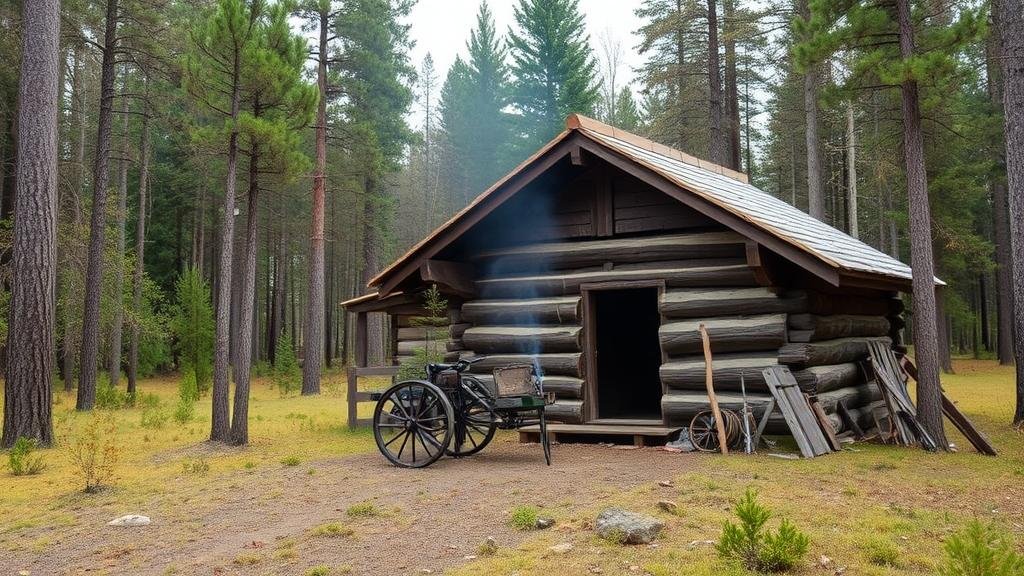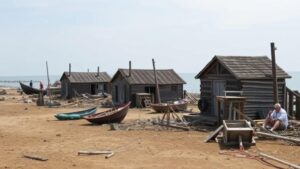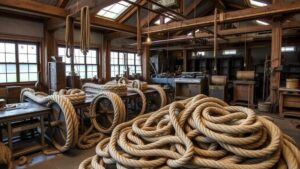Exploring Early Hunting Cabin Locations for Frontier Equipment Artifacts
Exploring Early Hunting Cabin Locations for Frontier Equipment Artifacts
The study of early hunting cabin locations on the American frontier reveals significant insights into the socio-economic patterns and material culture of the period. Utilizing archaeological methods and historical analysis, this research aims to identify the locations of these cabins and connect them to the artifacts found therein, which reflect the daily lives and survival strategies of frontier dwellers.
Historical Context
The American frontier, particularly between 1800 and 1900, was characterized by the establishment of hunting cabins as temporary shelters for explorers, traders, and settlers. These structures were not merely places of residence; rather, they served as strategic points for resource extraction and a base for interactions with Indigenous populations. According to the U.S. Bureau of the Census, over 400,000 settlers moved westward throughout the mid-1800s, with many relying heavily on hunting and the materials they could harvest from their surroundings.
Methodology
This research employs a multi-faceted approach that includes:
- Geospatial analysis using Geographic Information Systems (GIS) to identify potential locations of hunting cabins.
- Field surveys to excavate and document artifacts linked to the early hunting culture.
- Historical document analysis, including journals, maps, and land records from the period.
The integration of these methods allows for a comprehensive understanding of the spatial distribution of hunting cabins across key regions, particularly in areas such as the Appalachian Mountains and the Great Plains.
Identifying Artifact Types
The artifacts recovered from early hunting cabin sites can be categorized into several distinct types, each providing clues about the daily lives of frontier inhabitants:
- Hunting Tools: Items such as flintlocks, knives, and traps–dating from 1820 to 1870–indicate the methods and efficiency of hunting practices. For example, a collection excavated from a site in Wyoming revealed over 100 artifacts, including a well-preserved flintlock rifle from 1835.
- Cooking Uses: Artifacts including cast iron pots and utensils reflect the diets and culinary practices of frontier life. A notable find in Kentucky in 1863 included an entire cooking set, confirming the importance of communal meals in these isolated settings.
Case Studies
To illustrate the findings, we present two prominent case studies from North America:
Case Study 1: Kentucky
In the early 1800s, Kentucky became a vital region for hunting cabins. Archaeological investigations at a site near the Red River Gorge uncovered multiple artifacts attributable to the late 1830s, including a copper kettle and musket fragments. These items suggest that the cabin was a hunting lodge for both settlers and Indigenous hunters, facilitating trade in pelts and other goods.
Case Study 2: Colorado
In Colorado, a site excavated near the Arkansas River revealed a previously undocumented cabin used during the 1850s. artifacts found included numerous tools indicative of both hunting and mining activities, notably a pickaxe and numerous animal bones. This site illustrates the dual-purpose nature of frontier cabins, highlighting how settlers adapted to both the needs of hunting and the discovery of mineral wealth.
Challenges and Considerations
While the exploration of early hunting cabin locations and artifacts yields valuable information, several challenges persist:
- Site Preservation: Many cabin sites are at risk due to urban development, environmental changes, and natural erosion.
- Artifact Recovery: Ensuring the correct handling and conservation of artifacts is crucial to maintaining their historical context and significance.
Proactive measures, such as archaeological site monitoring and public education initiatives, are essential to treasure these sites for future research.
Conclusion and Actionable Takeaways
The exploration of early hunting cabin locations offers a complex view into the lives of frontier inhabitants. Future research should focus on preserving these sites, continuing to excavate artifacts, and enhancing public understanding of this period. By advocating for archaeological conservation efforts, communities can help ensure that the rich history of frontier life is not lost to time.
To wrap up, the artifacts recovered from early hunting cabins serve not only as remnants of a bygone era but as vital sources of information that contribute to our understanding of the socio-economic dynamics of the American frontier.



